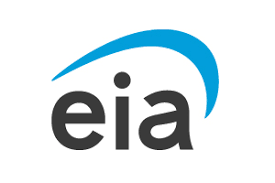· Brian Horton · Natural gas storage · 3 min read
U.S. Natural Gas Inventories Climb to 3,217 Bcf Amid LNG Demand
The EIA reported a 18 Bcf build in U.S. natural gas storage for the week ending August 22, 2025. Inventories remain above the five-year average as LNG exports and warm weather forecasts support prices near $2.90/MMBtu.

In its latest Weekly Natural Gas Storage Report, the U.S. Energy Information Administration (EIA) announced that working natural gas in storage across the Lower 48 states increased by 18 billion cubic feet (Bcf) for the week ending August 22, 2025. This brings total gas stocks to 3,217 Bcf, positioning current inventories 154 Bcf above the five-year average of 3,063 Bcf and 112 Bcf below the same period last year.
This latest build came in slightly below market expectations, with analysts having anticipated an injection of around 21 Bcf. The lower-than-expected increase has contributed to a modest rebound in U.S. natural gas futures, which climbed toward $2.90 per MMBtu following a sharp dip earlier in the week. The rally has been supported by both bargain buying and steady liquefied natural gas (LNG) export activity, which continues to play a pivotal role in balancing the domestic gas market.
Regional Storage Breakdown Reflects Mixed Flows
Storage trends were mixed across regions. The East and Midwest regions posted net injections of 17 Bcf and 20 Bcf, respectively, reflecting moderate cooling demand and ample supply. In contrast, the Mountain and Pacific regions saw modest withdrawals of 1 Bcf and 3 Bcf, while the South Central region posted a more significant decline of 16 Bcf, largely driven by a 10 Bcf draw from salt facilities.
Despite the week’s overall injection, current gas stocks are 3.4% lower than this time last year, when inventories stood at 3,329 Bcf, but remain comfortably within the five-year historical range.
LNG Exports and Weather Outlook Provide Price Support
As of late August, LNG feed gas deliveries have averaged 15.9 billion cubic feet per day (Bcf/d)—an increase from 15.6 Bcf/d in July, though still slightly under the all-time record of 16.0 Bcf/d set in April. Strong international demand and the lack of significant hurricane threats in the Atlantic, including the expected dissipation of Tropical Storm Fernand, have helped maintain steady flows to U.S. export terminals.
Weather models also support near-term demand, with 155 cooling degree days (CDDs) forecast over the next two weeks—well above the seasonal average of 135 CDDs. This could bolster power sector gas consumption as air conditioning use remains elevated across parts of the country.
However, overall natural gas demand is projected to taper off, falling from 111.1 Bcf/d this week to around 104.3 Bcf/d by mid-September, in line with typical late-summer patterns. On the supply side, production continues to rise, averaging 108.5 Bcf/d in August—surpassing the prior record monthly high of 107.8 Bcf/d set in July.
Outlook Remains Balanced Amid High Production and Seasonal Shifts
Despite easing demand forecasts, the combination of high production levels, strong LNG exports, and above-normal temperatures has helped stabilize prices and maintain storage injections within a manageable range. With inventories still comfortably above the five-year average and well within historical norms, the market remains in a relatively balanced position heading into the fall.
As the EIA prepares to release its next storage report on September 4, 2025, traders and analysts will continue to monitor both weather-driven demand and LNG export dynamics for further price direction.
- natural gas storage
- US gas inventory
- natural gas prices
- LNG exports
- EIA weekly report